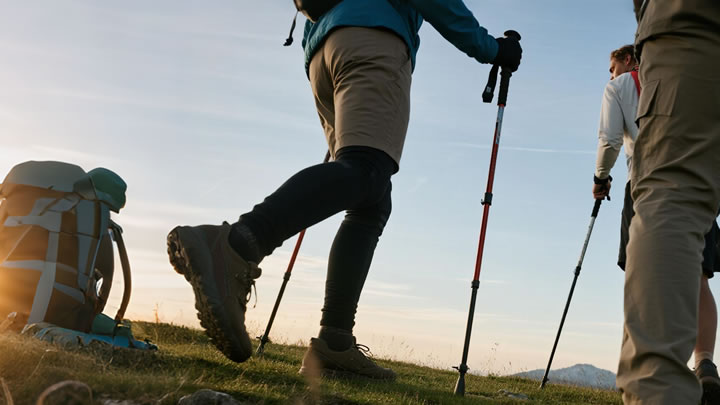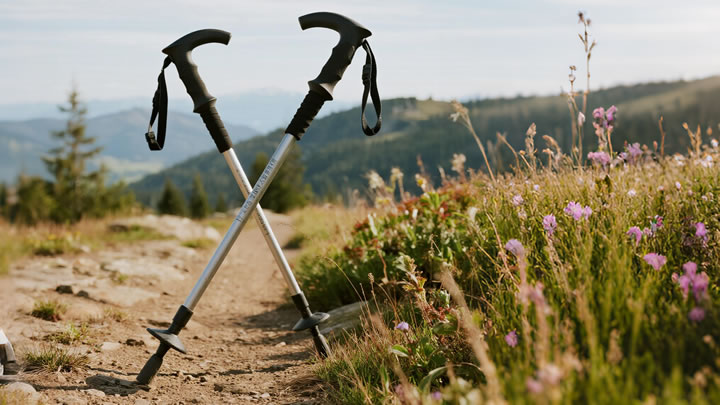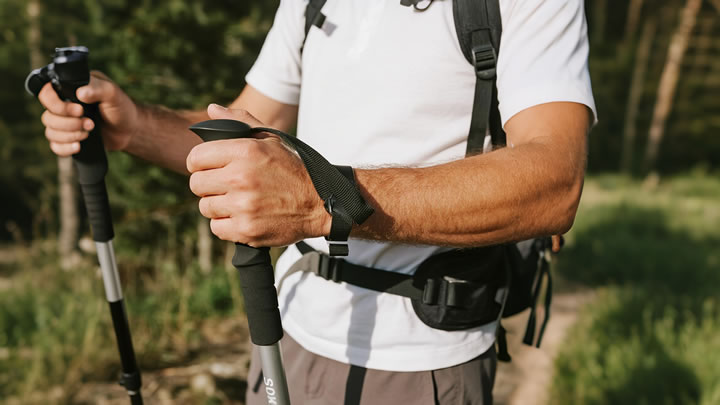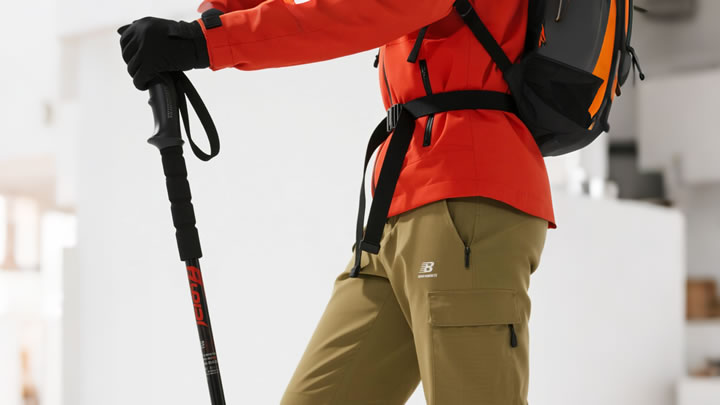Difference between hiking sticks and trekking poles?
Wednesday, July 23, 2025
While often used interchangeably, hiking sticks and trekking poles serve distinct purposes, with critical differences in design, function, and performance. Choosing wrong risks injury or wasted money. Here’s how to match tool to terrain:

⚙️ Core Design Differences
| Feature | Hiking Stick | Trekking Pole |
|---|---|---|
| Construction | Single shaft (wood/aluminum) | Adjustable 2–5 sections (carbon/aluminum) |
| Grip | Knob, T-handle, or simple curve | Ergonomic (cork/foam/rubber) + wrist strap |
| Tip | Rubber foot or metal spike | Interchangeable carbide tip + basket |
| Weight | 400–800g | 200–500g (carbon) |
| Shock Absorption | None | Built-in springs (e.g., LEKI Micro Vario) |
🏔️ Functionality Compared: When to Use Which
1. Terrain Performance
| Terrain | Hiking Stick | Trekking Pole |
|---|---|---|
| Paved Trails | ✅ Adequate support | Overkill |
| Steep Descents | ❌ Poor stability | ✅ 30% knee impact reduction |
| River Crossings | ❌ High slip risk | ✅ Probe depth + 4-point stability |
| Snow/Ice | ❌ Limited grip | ✅ Carbide tips + powder baskets |
2. User Scenarios
- Hiking Sticks Excel For:Light day hikes (<5km) on groomed pathsSymbolic/ceremonial use (e.g., staffs)Budget-conscious beginners ($15–$40)
- Trekking Poles Essential For:Loads >15kg (↓ 22% shoulder strain)Technical terrain (↓ 47% fall risk, Appalachian Trail Conservancy)Arthritis/knee pain sufferers
📊 Biomechanical Impact: Safety Data
| Metric | Hiking Stick | Trekking Poles |
|---|---|---|
| Knee Stress Reduction | 0–10% | 20–30% |
| Balance Improvement | 15% | 47% |
| Calorie Burn Increase | 5% | 15–20% |
| Source: Journal of Sports Science, 2023 |
⚠️ Risks of Misuse
- Using a Stick Like a Pole:No wrist straps → palm blistersFixed length → poor ergonomics → elbow strainSingle point → higher fall risk on scree
- Using Poles Like a Stick:Dragging tips → premature wearIgnoring length adjustment → reduced efficiency
💰 Cost vs. Value Analysis
| Type | Price Range | Lifespan | Best Use Case |
|---|---|---|---|
| Wooden Stick | $15–$30 | 1–3 years | Gentle trails |
| Fixed Aluminum | $25–$50 | 5+ years | Improved support |
| Trekking Poles | $60–$200 | 5–12 years | Technical/weight-bearing |
💡 Smart Hybrid: Pacerpole (ergonomic stick-like grip + pole tech) bridges gaps at $75.
✅ Verdict: Which Should You Choose?
Opt for a Hiking Stick If You:
- Walk mostly flat, groomed trails
- Need minimalistic support or walking aid
- Prioritize tradition/budget over performance
Choose Trekking Poles If You:
- Hike >8km with elevation gain
- Carry >10kg packs
- Navigate rocks, streams, or snow
- Seek joint protection or injury recovery
"On the Camino de Santiago, my wooden stick was symbolic. On the Tour du Mont Blanc’s steep descents? Trekking poles saved my knees." — Elena R., long-distance hiker
🔧 Pro Tips for Transitioning
- Test Both: Rent poles before buying; try sticks on local trails.
- Master Technique:Poles require 90° elbows + rhythmic plantingSticks rely on natural arm swing
- Hybrid Hack: Remove one trekking pole grip → instant staff for mixed terrain.
Remember: Sticks are tools of simplicity; poles are instruments of performance. Match your gear to your ambitions, and you’ll conquer trails in comfort. 🚶♂️⛰️






